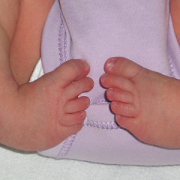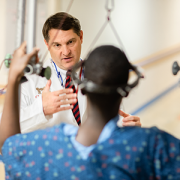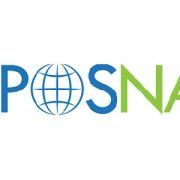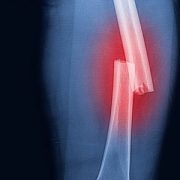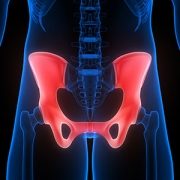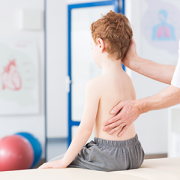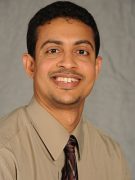Assessing clubfoot recurrence rates and causes
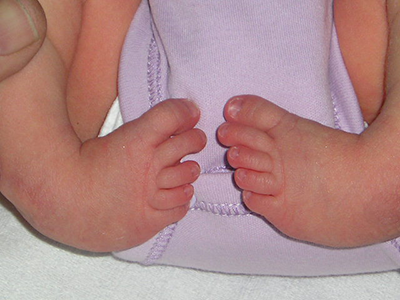
A Children’s National research team performed a structured literature review to determine the reported rates of clubfoot correction and recurrence after the Ponseti technique and to identify factors that contribute to these issues.
Clubfoot, or talipes equinovarus, is a congenital foot deformity that affects the bones, muscles, tendons and blood vessels in the feet. It occurs in approximately 1 to 3 of every 1,000 births and is traditionally treated with the nonsurgical Ponseti technique, which uses manipulation and casting to correct the condition. Unfortunately, recurrence of clubfoot after treatment is somewhat common.
A Children’s National research team led by Matthew Oetgen, M.D., Division Chief of Orthopaedic Surgery and Sports Medicine, recently performed a structured literature review to determine the reported rates of clubfoot correction and recurrence after the Ponseti technique and to identify factors that contribute to these issues.
Ponseti treatment is generally administered during the first few weeks of life in order to take advantage of the elasticity of tissues forming the ligaments, joint capsules and tendons. These structures are stretched with weekly, gentle manipulations, and a plaster cast is applied after each session to retain the degree of correction obtained and to soften the ligaments. Over the course of six to eight weeks, the displaced bones are brought into the correct alignment. In order to maintain this alignment, braces are then worn for 23 hours a day for up to three months, and then at night for two to four years.

The team, led by Matthew Oetgen, M.D., determined that the average rate for correction of clubfoot via the Ponseti technique is 95 percent, with a recurrence rate of 23 percent.
The team from Children’s National, which included Princeton intern Michelle Richardson and Allison Matthews, focused on 81 articles found in the PubMed, Cumulative Index to Nursing and Allied Health Literature (CINAHL), and Scopus databases. From this data, they determined that the average rate for correction of clubfoot via the Ponseti technique is 95 percent, with a recurrence rate of 23 percent.
The researchers also found that 78 percent of recurrence was due to five factors: brace non-compliance, lack of parent education, functional brace issues, casting issues and poor patient tolerance.
Looking further into non-compliance of bracing, the team discovered that the average non-compliance rate was 27 percent, and that factors affecting non-compliance in about half the cases included parent education, financial difficulties, practical brace issues, social difficulties and cultural issues.
The team’s findings should be helpful in establishing programs aimed at decreasing recurrence rates and improving compliance with bracing in children treated for clubfoot.


